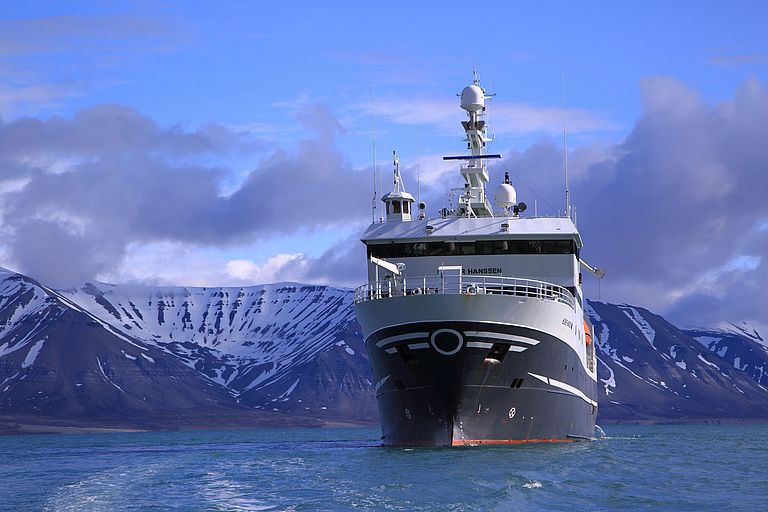Methane Seeps off Svalbard reduce Greenhouse Effect
International research team publishes new findings about gas exchange in the Arctic
(Read the full English press release on the website of the United States Geological Survey: www.usgs.gov/news/ocean-absorption-carbon-dioxide-more-makes-methane-emissions-seafloor-methane-seeps
Reference:
Pohlman, J. W., J. Greinert, C. Ruppel, A. Silyakova, L. Vielstädte, M. Casso, J. Mienert, S. Bünz (2017): Enhanced CO2 uptake at a shallow Arctic Ocean seep field overwhelms the positive warming potential of emitted methane. Proc. Natl. Acad. Sci. USA, Early Edition, www.pnas.org/cgi/doi/10.1073/pnas.1618926114
Contact at GEOMAR:
Jan Steffen (GEOMAR, Communication and Media), Tel.: 0049 431 600-2811, presse(at)geomar.de

Research vessel Helmer Hanssen offshore the Svalbard Islands. Photograph © Randall Hyman


